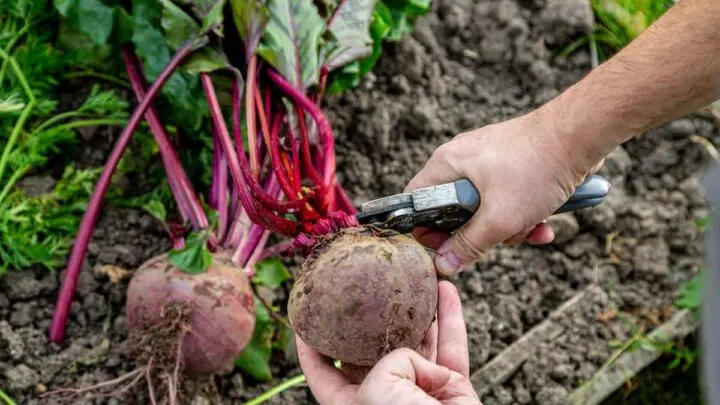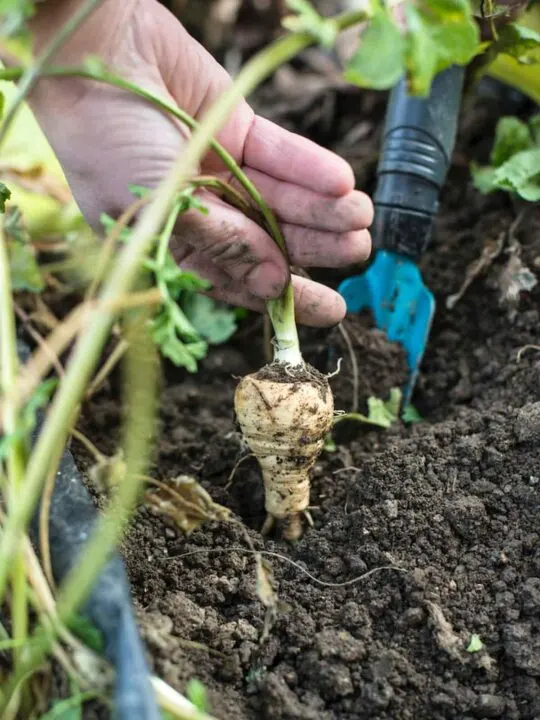While planning your garden, spend some time plotting out which plants should go in each spot before putting them in the ground. There are several reasons this is a crucial step to take in your gardening process, as some plants aid each other in their development and grow very well together, while others do not thrive when planted together.
With the specific example of beets and parsnips, these two plants typically do pretty well when planted next to each other in a garden.
Planting two different vegetables together is called companion planting, and it is a great strategy to ensure you have a plentiful harvest when executed correctly. Companion planting also ensures your plants avoid attracting too many insects.
Beets and parsnips are two plants that are recommended for companion planting as they bring out the best in each other without causing any unwanted side effects.

Why Do Beets and Parsnips Grow Well Together?
Beets and parsnips make great companion plants because they grow well together without hurting each other and grow stronger when planted together. There are several advantages to growing these plants together, including attracting good types of insects and wildlife and nourishing the soil.
When beets and parsnip are grown together, they return healthy nutrients like magnesium and potassium to the soil. These good nutrients act as a fertilizer for both plants and help them grow stronger and healthier.
The scents that parsnips and beets release as they grow deter certain pests, preventing both crops from being attacked by unwanted predators. Additionally, parsnips and beets are both plants that should be grown during cool weather, so they complement each other by growing during the same time of year.
One thing to note if you choose to plant your beets and parsnips together is that parsnips will be ready to harvest in a much shorter time frame than the beets, so you will want to make sure to harvest your parsnips in a timely manner so that the beets have the necessary room to keep growing.

What Are the Benefits of Companion Planting?
The idea of companion planting offers many advantages for your garden in addition to helping specific crops grow more successfully. For one, having companion plants in your garden is proven to make all plants grow faster overall and can even help them taste better.
Planting companion plants together can also help protect your plants from being damaged by the sun. Certain low-growing plants can act as a protective blanket over delicate sprouts and soil and keep your plants cooler during the day. It can also be beneficial to grow companion plants if you are worried one of your plants is weak and may need additional structural support. Instead of using a stake or growing pole, you can plant a stronger supporting plant that each of the plants can lean on, which will make them both stronger.
Additionally, companion plants help to protect your garden from the natural elements that may destroy a garden. Strong gusty winds or damaging thunderstorms can wreak havoc on a garden, especially while your plants are still young and growing.
If you plant compatible companion plants, the taller plant can act as a shelter for the weaker one, which will help it stay out of the worst of the wind and damaging rains.

What Should Not Be Planted With Beets?
It is essential to be mindful about what varieties of plants you put in your garden together. Some plants grow together much more cohesively than others, and beets, in particular, can be sensitive to which plants are near them.
Some plants that should not be planted near beets include pole beans and two varieties of mustard: field mustard and charlock. In the same way that certain plants help each other grow to be their best, other plants can work against each other in the same way.
What Should Not Be Planted with Parsnips?
While parsnips grow very well with certain plants, there is a list of several plants that should never be planted next to parsnips. At the top of this list are carrots, celery, and dill. The three plants mentioned are quite vulnerable to illness, and planting them next to parsnip can also cause your parsnip crop to end up damaged.
The largest problem with growing carrots with parsnips is the fear of both plants being attacked by the carrot fly, an invasive pest that can knock out a harvest quickly. This can be avoided entirely if carrots are not planted next to parsnips.

What Other Plants Grow Well With Beets?
If you are looking for additional companion plants to add in with your beets and parsnips, consider also planting an aromatic herb. The aromatic aspect is key for helping your beets grow, as the aroma of certain herbs will keep away bad bugs and pests such as mice.
Plants considered aromatic herbs include popular cooking herbs like oregano, rosemary, and mint. These are a great addition to any garden as they produce a delicious and hearty herb crop and will offer the added benefit of helping your beets grow.
One thing to be mindful of when planting herbs is that they can grow to be quite large and take up a lot of room in a garden. Be careful not to plant your beets too close to any other plant to ensure they all have equal room to spread out and grow!

Hi there, my name is Allie and welcome to my blog; GareningWithAllie!
Much of what you see written here is just our personal experiences with gardening. Along with the content I write here, there is also a unique collection of gardening topics covered by some of our close friends. I hope you find everything you read here to be helpful, informative, and something that can make your gardening journey the most lovely experience ever! With that said, Happy Gardening!
